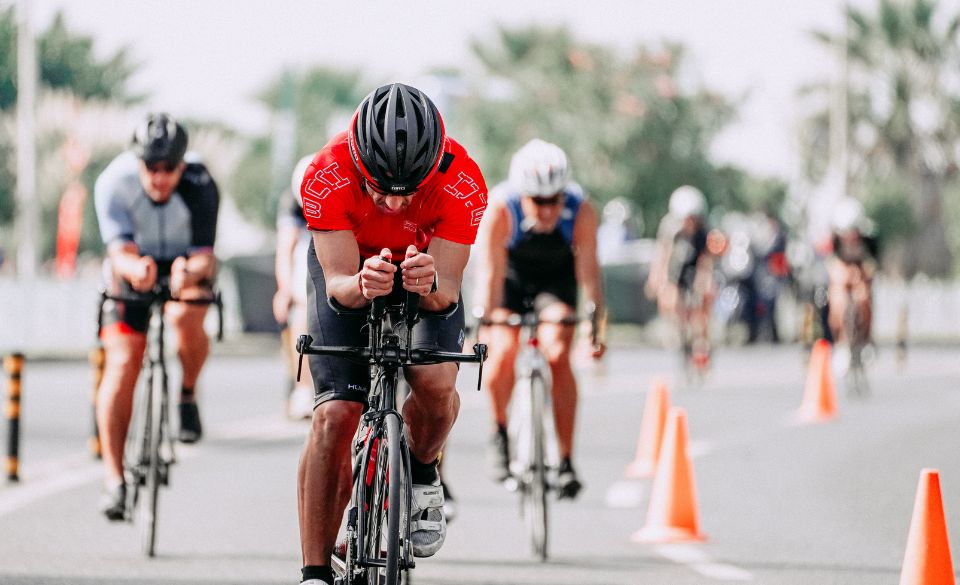
How To Choose The Best Taper for Your Next Triathlon
Page Contents
Successfully tapering your training is crucial to achieving your race day goals. The process of tapering involves gradually reducing your training volume and intensity to give your body time to rest and recover before the big event. But with so many different tapering strategies out there, it can be difficult to determine the best approach for you.
Thankfully, SportCoaching has identified three different types of tapers that athletes can use depending on their individual needs. By modifying the volume, intensity, and duration of their workouts, athletes can fine-tune their taper to achieve their specific race goals.
Preparing for an event as an athlete requires careful planning and training. Throughout the year, an athlete undergoes progressive training loads and subsequent recovery to increase their overall fitness, which is a combination of speed, strength, and endurance. However, when an athlete is closing in on a goal event, maintaining the same weekly overload and recovery schedule isn’t ideal to reach their potential on race day. This is where the taper comes in.
A taper is a controlled decrease in training load that brings an athlete to the pinnacle of a focused mind and a body that has shed all fatigue and is fresh to go. It is the final step to achieving an athlete’s race goal. The taper’s purpose is to sharpen the body’s ability to perform, but it’s not as simple as just reducing the workout volumes and/or intensities. It is both an art and a science to get to that point.
Numerous studies have been conducted on how the body reacts to reducing training load in preparation for an event. The taper can be defined as “a progressive, nonlinear reduction of the training load during a variable period of time that is intended to reduce physiological and psychological stress of daily training and optimize sport performance.” However, every athlete is unique, and their reactions to this reduction in training vary. The recovery time, required sharpening, and reaction to long-distance travel are all individual factors that must be considered. Therefore, determining what each athlete requires takes time and experimentation. That’s where a coach’s expertise comes in handy to help athletes prepare for their race.
To start, reducing the training load by 20% per week in the two weeks leading up to the competition is a good rule of thumb. However, one should be mindful that while frequency and volume should be reduced, maintaining some intensity is necessary and proven to be very effective. This is because the body needs to recover from the “load” but still needs to remain sharp neuromuscularly for the task at hand.
There are several ways to approach the weeks leading up to a race, depending on various factors such as the athlete’s ability to recover, the overall training load, and the type and duration of the event. An athlete training 8 to 10 hours per week may not require many adjustments as the overall volume is relatively low. However, a well-trained athlete putting in 18 to 20 hours per week leading to an Olympic Distance triathlon requires a more careful approach.
In conclusion, the taper is the final step to achieving an athlete’s race goal. It requires careful planning and experimentation to determine what works best for each athlete. Reducing the training load while maintaining some intensity is essential to ensure that the body recovers from the “load” while remaining sharp neuromuscularly. Working with a coach can help athletes prepare for their race and reach their full potential.
Three Types of Tapers
A fundamental tapering strategy known as “Linear” involves a 20% reduction in workload two weeks before the race, followed by an additional 20% reduction in the final week. Another tapering approach, called “Step,” abruptly reduces training load two weeks before the race and maintains that low load throughout the taper period. This method has been proven to be the least effective in research studies. The third and final tapering technique, “Exponential,” gradually reduces the initial volume of training over 2 to 3 weeks and progressively decreases it further in the week leading up to the event. For many, the Exponential taper is the preferred method as it allows for recovery from the last training block and helps to sharpen the body and mind before the race weekend.
Volume and Intensity of A Taper
The tapering period involves a reduction in training load, with a primary focus on reducing endurance volume. Athletes preparing for Olympic and Ironman 70.3 distance events may benefit from maintaining specific intervals that reinforce race pace, along with short lactate threshold interval sets lasting less than an hour. In the case of Ironman preparation, arriving at the start line feeling refreshed is crucial as the pace is not typically fast on race day, but muscle fatigue can become more pronounced after several hours of competition.
Duration of a Taper
In our experience, some athletes perform exceptionally well when they are well-rested and fresh on race day. These individuals usually have a natural predisposition towards speed and rely on rested muscles to perform at their best. For such athletes, we prefer to have them rest for a period of 7 to 9 days leading up to a key event, with low-volume training and occasional pace work.
However, there are other athletes who tend to become stiff and sluggish if they are not active enough leading up to the race. These “diesel engine” athletes rely on high cardiovascular fitness and can perform aerobically at a higher percentage of their lactic threshold. In such cases, I recommend that they rest for 7 to 14 days prior to the event and gradually build up their training volume during the race week, with a focus on sharpening their performance in the 3 to 5 days leading up to the race.
It’s worth noting that running is a weight-bearing activity that places greater stress on the muscles compared to swimming and cycling. Therefore, athletes should be cautious with their running volume during race week. Additionally, if an athlete is not efficient in one of the three activities – swimming, cycling, or running – the resulting fatigue from that specific activity may be higher, and hence the training volume in that activity should be monitored carefully.
Final Words – How To Choose The Best Taper for Your Next Triathlon
This article provides insights on selecting the appropriate tapering technique for triathletes leading up to a race. The tapering period involves a gradual reduction in training load, with the primary focus on reducing endurance volume. The article suggests that athletes who have more natural speed should rest for 7 to 9 days leading up to the race, while those who rely on high cardiovascular fitness should rest for 7 to 14 days and gradually build up their training volume. It also highlights the importance of being cautious with running volume during race week as it places more stress on the muscles.



